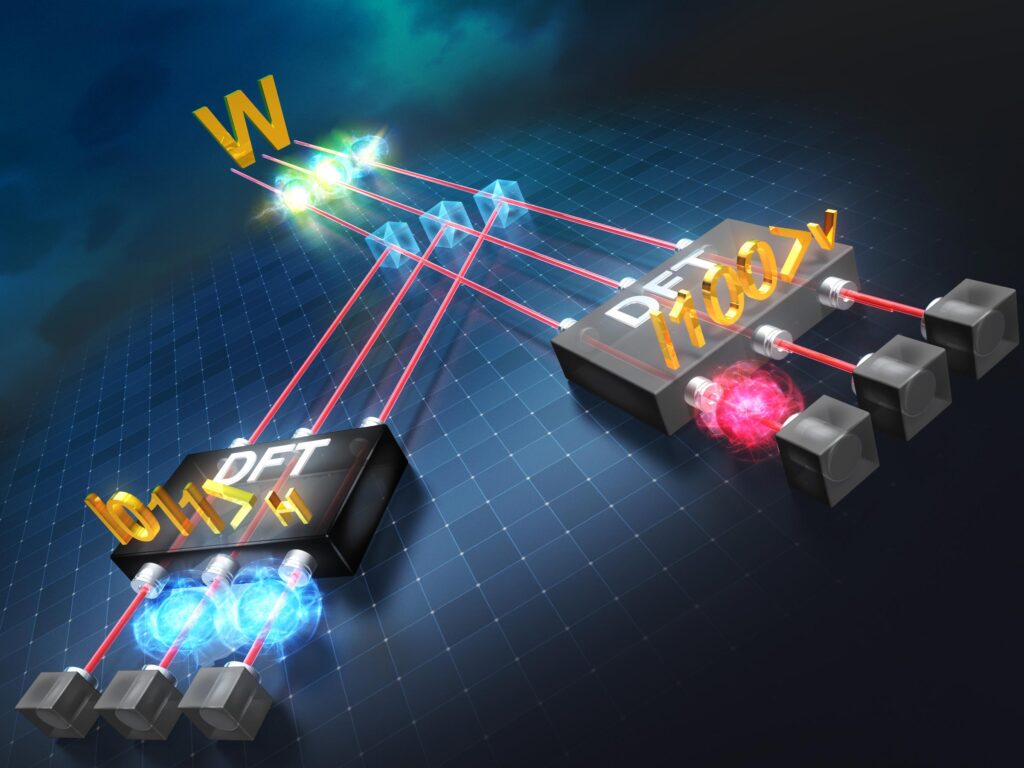
In a groundbreaking development, scientists have successfully demonstrated the first entangled measurement for W states, marking a significant advancement in quantum information transfer and computing. This achievement, spearheaded by researchers from Kyoto University and Hiroshima University, could pave the way for revolutionary applications in quantum technologies.
Quantum entanglement, a phenomenon that underscores the stark differences between classical and quantum physics, challenges the traditional view that each particle has its own distinct reality. This concept, which famously troubled Albert Einstein, is crucial for the development of next-generation quantum technologies. Understanding and harnessing entanglement are pivotal for creating reliable quantum systems capable of complex computations and secure communications.
Understanding the Complexity of Quantum Entanglement
To advance quantum technologies, researchers must generate multi-photon entangled states and accurately identify the type of state produced. Conventional methods, such as quantum tomography, face significant challenges due to the exponential increase in required measurements as the number of photons grows. This complexity poses a major hurdle for data collection and analysis.
The recent breakthrough involves an entangled measurement for W states, a fundamental form of multi-photon entanglement. While such measurements had been achieved for Greenberger-Horne-Zeilinger (GHZ) states, the W state had remained elusive until now. The team from Kyoto and Hiroshima Universities developed a novel method that leverages the W state’s cyclic shift symmetry, employing a photonic quantum circuit to perform quantum Fourier transformation for W states of any photon number.
Pioneering Research and Methodology
According to Shigeki Takeuchi, the corresponding author, “More than 25 years after the initial proposal concerning the entangled measurement for GHZ states, we have finally obtained the entangled measurement for the W state as well, with genuine experimental demonstration for 3-photon W states.”
The researchers constructed a device designed to handle three photons, utilizing highly stable optical quantum circuits capable of long-term operation without active control. By preparing three single photons with specific polarization states, the device successfully distinguished different types of three-photon W states, each associated with unique non-classical correlations among the input photons. The fidelity of the entangled measurement, defined as the likelihood of obtaining the correct outcome with a pure W-state input, was also assessed.
Implications for Quantum Technologies
This breakthrough opens new avenues for quantum teleportation, potentially transforming the transfer of quantum information. It could also lead to innovative quantum communication protocols and new methods for measurement-based quantum computing.
“In order to accelerate the research and development of quantum technologies, it is crucial to deepen our understanding of basic concepts to come up with innovative ideas,” Takeuchi emphasized.
Looking ahead, the team plans to apply their method to larger-scale, more general multi-photon quantum entangled states and develop on-chip photonic quantum circuits for entangled measurements. These advancements could significantly enhance the scalability and practicality of quantum technologies.
Future Prospects and Continued Research
The implications of this research are vast, with potential applications in secure communications, advanced computing, and beyond. The ability to reliably generate and measure entangled states is a critical step toward realizing the full potential of quantum technologies.
This study, titled “Entangled measurement for W states,” was published on September 12, 2025, in Science Advances. The research received funding from the Japan Science and Technology Agency and the Japan Society for the Promotion of Science.
Reference: “Entangled measurement for W states” by Geobae Park, Holger F. Hofmann, Ryo Okamoto, and Shigeki Takeuchi, DOI: 10.1126/sciadv.adx4180
As the field of quantum technology continues to evolve, breakthroughs like this one underscore the importance of innovative research and international collaboration. The future of quantum computing and communication looks promising, with the potential to revolutionize how we process and transmit information.






